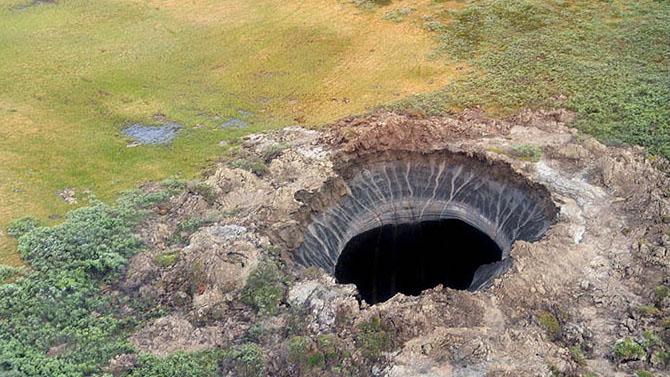Tundra
Scientists are trying to get to the bottom of those mysterious new holes in Siberia
The discovery of two giant holes in the ground in far northern Russia is raising all kinds of speculation about their origin. No one yet knows for sure how they were formed, but a leading scientist is pointing to an ever-more usual suspect—climate change.

